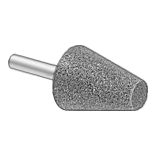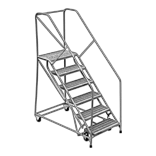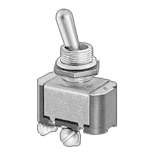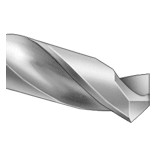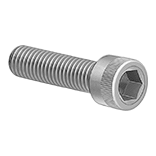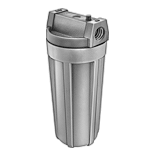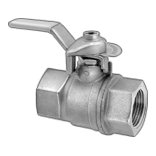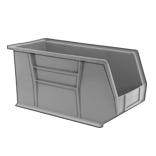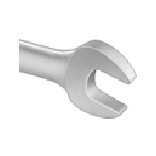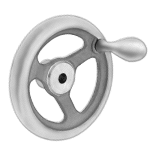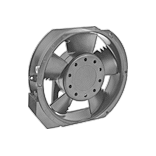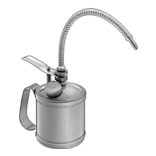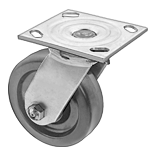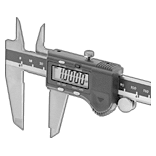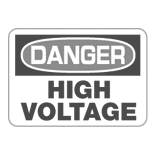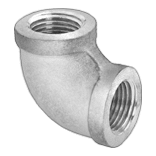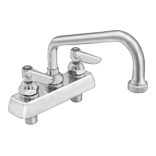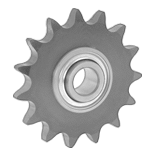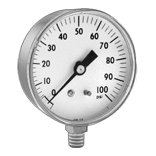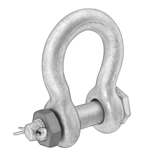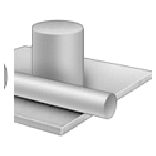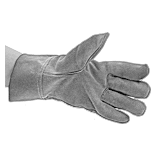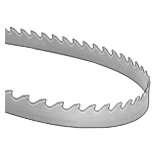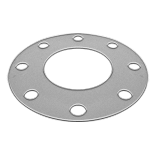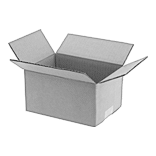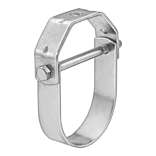Low-Melting-Point Solder for Low-Temperature Applications

Even as temperatures approach absolute zero, this indium solder remains soft and malleable, allowing it to form an airtight seal between metal and certain non-metal materials. It’s often used in cryogenic applications, including those with liquid nitrogen. This solder has a lower melting point than most solders, so it’s good for sensitive assemblies, such as semiconductors and electronic components. Unlike commonly used tin-based solders, this solder won’t damage gold plating on circuit boards. It’s also a good conductor of heat and electricity. More durable than standard tin-lead solder, this solder is less likely to crack from repeated temperature swings. It’s low outgassing, so it’s good for use in high-vacuum applications.
This indium-based solder can be cold welded, meaning it will bond to itself without heat. You can also use it for step soldering with traditional solders. It does not have a flux core; choose soldering flux to prepare workpieces for this solder.
Leaded solder has greater tensile strength and density than other indium-based solders, giving it a stronger hold.
Lead-free solder is safer to use than leaded solder and helps meet industry regulations. Solder that is 100% indium has better thermal conductivity than solder that contains tin, and will cold weld more easily. However, it has lower tensile and shear strength than solder with tin. Solder with 48% tin has greater tensile and shear strength than 100% indium solder, but lower thermal and electrical conductivity.
Material Composition | ||||||||||
|---|---|---|---|---|---|---|---|---|---|---|
| Solder Composition | Indium | Lead | Silver | Melting Temperature, °F | Thermal Conductivity, W/m-°C | Tensile Strength, psi | Diameter | Weight, oz. | Each | |
For Joining Aluminum, Brass, Bronze, Ceramic, Glass, Gold, Nickel Alloys, Quartz, Stainless Steel, Steel, Zinc | ||||||||||
| In80Pb15Ag5 | 80% | 15% | 5% | 310° | 43 | 2,550 | 0.030" | 0.16 | 0000000 | 0000000 |
Material Composition | ||||||||||
|---|---|---|---|---|---|---|---|---|---|---|
| Solder Composition | Indium | Tin | Lead | Melting Temperature, °F | Thermal Conductivity, W/m-°C | Tensile Strength, psi | Diameter | Weight, oz. | Each | |
For Joining Aluminum, Brass, Bronze, Ceramic, Glass, Nickel Alloys, Quartz, Stainless Steel, Steel, Zinc | ||||||||||
| In52Sn48 | 52% | 48% | 0% | 245° | 34 | 1,720 | 0.030" | 0.11 | 0000000 | 0000000 |
| In100 | 100% | __ | 0% | 315° | 86 | 270 | 0.030" | 0.11 | 0000000 | 000000 |
Low-Melting-Point Solder Ribbon for Low-Temperature Applications

Made with indium this solder is soft and malleable—even as temperatures approach absolute zero—allowing this solder to form an airtight seal between metal and certain non-metal materials. It’s often used in cryogenic applications, including those with liquid nitrogen. Thanks to its ribbon shape, this solder is easier to use on large, flat areas than wire solder.
This solder has a lower melting point than most solders, making it good for sensitive assemblies, such as semiconductors and electronic components. Unlike commonly used tin-based solders, this solder won’t damage gold plating on circuit boards. It’s also a good conductor of heat and electricity. More durable than standard tin-lead solder, this solder is less likely to crack from repeated temperature swings. It’s low outgassing, so you can also use it in high-vacuum applications.
This indium-based solder can be cold welded, meaning it will bond to itself without heat. You can also use it for step soldering with traditional solders. It does not have a flux core, choose soldering flux to prepare workpieces for this solder.
Leaded solder has greater tensile strength and density than other indium-based solders, giving it a stronger hold.
Lead-free solder is safer to use than leaded solder and helps meet industry regulations.
Material Composition | ||||||||||||
|---|---|---|---|---|---|---|---|---|---|---|---|---|
| Solder Composition | Indium | Lead | Silver | Melting Temperature, °F | Thermal Conductivity, W/m-°C | Tensile Strength, psi | Length | Width | Thickness | Weight, oz. | Each | |
For Joining Aluminum, Brass, Bronze, Ceramic, Glass, Gold, Nickel Alloys, Quartz, Stainless Steel, Steel, Zinc | ||||||||||||
| In80Pb15Ag5 | 80% | 15% | 5% | 310° | 43 | 2,550 | 12" | 1" | 0.002" | 0.1 | 0000000 | 0000000 |
Material Composition | ||||||||||||
|---|---|---|---|---|---|---|---|---|---|---|---|---|
| Solder Composition | Indium | Tin | Lead | Melting Temperature, °F | Thermal Conductivity, W/m-°C | Tensile Strength, psi | Length | Width | Thickness | Weight, oz. | Each | |
For Joining Aluminum, Brass, Bronze, Ceramic, Glass, Gold, Nickel Alloys, Quartz, Stainless Steel, Steel, Zinc | ||||||||||||
| In52Sn48 | 52% | 48% | 0% | 245° | 34 | 1,720 | 12" | 1" | 0.002" | 0.1 | 0000000 | 0000000 |
| In100 | 100% | __ | 0% | 315° | 86 | 270 | 12" | 1" | 0.002" | 0.1 | 0000000 | 000000 |
Solder for Drinking Water

This solder meets NSF/ANSI Standard 61 for drinking water. It does not have a flux core, so you can choose the flux that works best for your application. This solder is lead-free, which means it is safer to use than leaded solder and helps meet industry regulations.
For technical drawings and 3-D models, click on a part number.
Material Composition | |||||||||
|---|---|---|---|---|---|---|---|---|---|
| Solder Composition | Tin | Silver | Copper | Lead | Melting Temperature, °F | Solder Type | Dia. | Each | |
1 lbs. | |||||||||
For Joining Aluminum, Brass, Bronze, Copper, Nickel Alloys, Stainless Steel, Steel, Zinc | |||||||||
| Sn95Cu4.8Ag0.2 | 95% | 0.2% | 4.8% | 0% | 440° | Flux Required | 0.118" | 00000000 | 000000 |
5 lbs. | |||||||||
For Joining Aluminum, Brass, Bronze, Copper, Nickel Alloys, Stainless Steel, Steel, Zinc | |||||||||
| Sn95Cu4.8Ag0.2 | 95% | 0.2% | 4.8% | 0% | 440° | Flux Required | 0.118" | 00000000 | 000000 |
High-Density Low-Melting-Point Solder

This bismuth-tin solder has similar performance properties to lead solder, but is also safe for use in food-processing equipment and copper water pipes. It has a lower melting point than most solders, so it’s good for sensitive assemblies, such as semiconductors and electronic components, as well as for step soldering with traditional solders. However, it’s less thermally conductive than other metals and more brittle than lead. Flux isn’t required, but for easier cleanup use it with no-clean soldering flux. This solder is lead-free, so it is safer to use than leaded solder and helps meet industry regulations. Do not use this solder on drinking water pipes.
Solder with 1% silver forms stronger bonds than solder without silver. It’s also more malleable and ductile. However, it has a higher melting point, so it takes longer to solder.
Mildly-Activated Rosin Soldering Flux for Electronics

This flux has strong cleaning action and leaves residue that will not compromise the reliability of the joint. The residue requires flux remover. Use this flux to clean and prepare electrical assemblies and printed circuit boards for soldering.
Container | |||||||
|---|---|---|---|---|---|---|---|
| For Joining | Size | Type | Form | Cleanup Method | Specifications Met | Each | |
| Copper, Nickel Alloys, Brass, Bronze, Zinc | 1 gal. | Bottle | Liquid | Flux Remover | IPC J-STD-004 | 0000000 | 000000 |
Fully-Activated Rosin Soldering Flux for Electronics

Providing the strongest cleaning power, this flux leaves residue that must be removed to ensure the reliability of the joint. The residue requires flux remover. Flux cleans and prepares electrical assemblies and printed circuit boards for soldering.
| For Joining | Container Size, gal. | Form | Cleanup Method | Specifications Met | Each | |
| Nickel Alloys, Copper, Brass, Bronze, Zinc | 1 | Liquid | Flux Remover | IPC J-STD-004 | 0000000 | 000000 |
Nonactivated Rosin Soldering Flux for Electronics

This flux has less cleaning action, but leaves the least amount of residue. The residue requires flux remover. Flux cleans and prepares electrical assemblies and printed circuit boards for soldering.
Container | |||||||
|---|---|---|---|---|---|---|---|
| For Joining | Size | Type | Form | Cleanup Method | Specifications Met | Each | |
| Nickel Alloys, Copper, Brass, Bronze, Zinc | 1 gal. | Bottle | Liquid | Flux Remover | IPC J-STD-004 | 0000000 | 000000 |
Fully-Activated Rosin Soldering Flux for High-Temperature Electronics

With the strongest cleaning power, this flux is fully activated to clean and prepare electrical assemblies and printed circuit boards for high-temperature soldering applications. However, it requires flux remover to clean residue for a reliable joint.
Soldering Flux for Plumbing


Use this flux for plumbing applications. The residue easily washes away with just water. Do not use it on magnesium or electronics.
Paste flux is easy to apply for precision applications. It meets NSF/ANSI 61 safety standards for drinking water.
Container | ||||||||
|---|---|---|---|---|---|---|---|---|
| For Joining | Size | Type | Form | Cleanup Method | Environment | Specifications Met | Each | |
| Steel, Copper, Brass, Zinc | 2 fl. oz. | Jar | Paste | Water | Food Industry | MIL-F-4995 Type II; NSF/ANSI 61 | 0000000 | 00000 |
| Steel, Copper, Brass, Zinc | 4 fl. oz. | Jar | Paste | Water | Food Industry | MIL-F-4995 Type II; NSF/ANSI 61 | 0000000 | 0000 |
| Steel, Copper, Brass, Zinc | 16 fl. oz. | Jar | Paste | Water | Food Industry | MIL-F-4995 Type II; NSF/ANSI 61 | 0000000 | 00000 |
| Steel, Nickel Alloys, Copper, Brass, Zinc | 16 fl. oz. | Bottle | Liquid | Water | __ | __ | 0000000 | 00000 |
| Steel, Nickel Alloys, Copper, Brass, Zinc | 32 fl. oz. | Bottle | Liquid | Water | __ | __ | 0000000 | 00000 |
| Steel, Nickel Alloys, Copper, Brass, Zinc | 1 gal. | Bottle | Liquid | Water | __ | __ | 0000000 | 00000 |
Nokorode Soldering Flux

Protect the solder joint from corrosion with this flux paste. The residue easily washes away with water. Since this flux meets NSF/ANSI 61, it's safe to use with drinking water. Do not use it on magnesium or electronics. It’s a paste, so it’s easy to apply for precision applications.
| For Joining | Container Net Weight | Form | Cleanup Method | Specifications Met | Each | |
| Nickel Alloys, Copper, Zinc | 1.7 oz. | Paste | Water | Fed. Spec. A-A-51145 Type I Form A; MIL-FS-6872; NSF/ANSI 61 | 000000 | 00000 |
| Nickel Alloys, Copper, Zinc | 4 oz. | Paste | Water | Fed. Spec. A-A-51145 Type I Form A; MIL-FS-6872; NSF/ANSI 61 | 0000000 | 0000 |
| Nickel Alloys, Copper, Zinc | 8 oz. | Paste | Water | Fed. Spec. A-A-51145 Type I Form A; MIL-FS-6872; NSF/ANSI 61 | 0000000 | 00000 |
| Nickel Alloys, Copper, Zinc | 1 lbs. | Paste | Water | Fed. Spec. A-A-51145 Type I Form A; MIL-FS-6872; NSF/ANSI 61 | 000000 | 00000 |
Nokorode Soldering Flux for High-Temperature Applications

A special formulation of Nokorode soldering flux, this flux remains thick at temperatures up to 115° F and protects your solder joint from corrosion. It’s a paste, so it’s easy to apply for precision applications. However, you shouldn't use it on magnesium or electronics.
Nokorode Soldering Flux for Low-Temperature Applications

Specially formulated, this Nokorode flux remains soft and sticky in temperatures down to -4° F and protects your solder joint from corrosion. It is paste, so it is easy to apply in precise applications. However, this flux is not for use on magnesium or electronics.
Paste Solder

Use this paste in hard-to-reach areas—apply a thin coat of paste to the surfaces you want joined, apply heat, and wipe with a damp cloth. Paste is made of finely powdered solder combined with a flux paste, so it creates strong welds without needing separate flux. It is lead-free, which means it is safer to use than leaded solder and helps meet industry regulations.
Material Composition | |||||||||
|---|---|---|---|---|---|---|---|---|---|
| Solder Composition | Tin | Antimony | Lead | Melting Temperature, °F | Solder Type | Form | Wt., lbs. | Each | |
For Joining Brass, Copper, Nickel Alloys, Steel, Zinc | |||||||||
| Sn95Sb5 | 95% | 5% | 0% | 470° | No Flux Required | Paste | 1 | 0000000 | 000000 |
